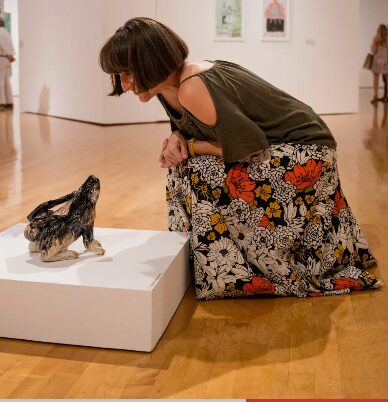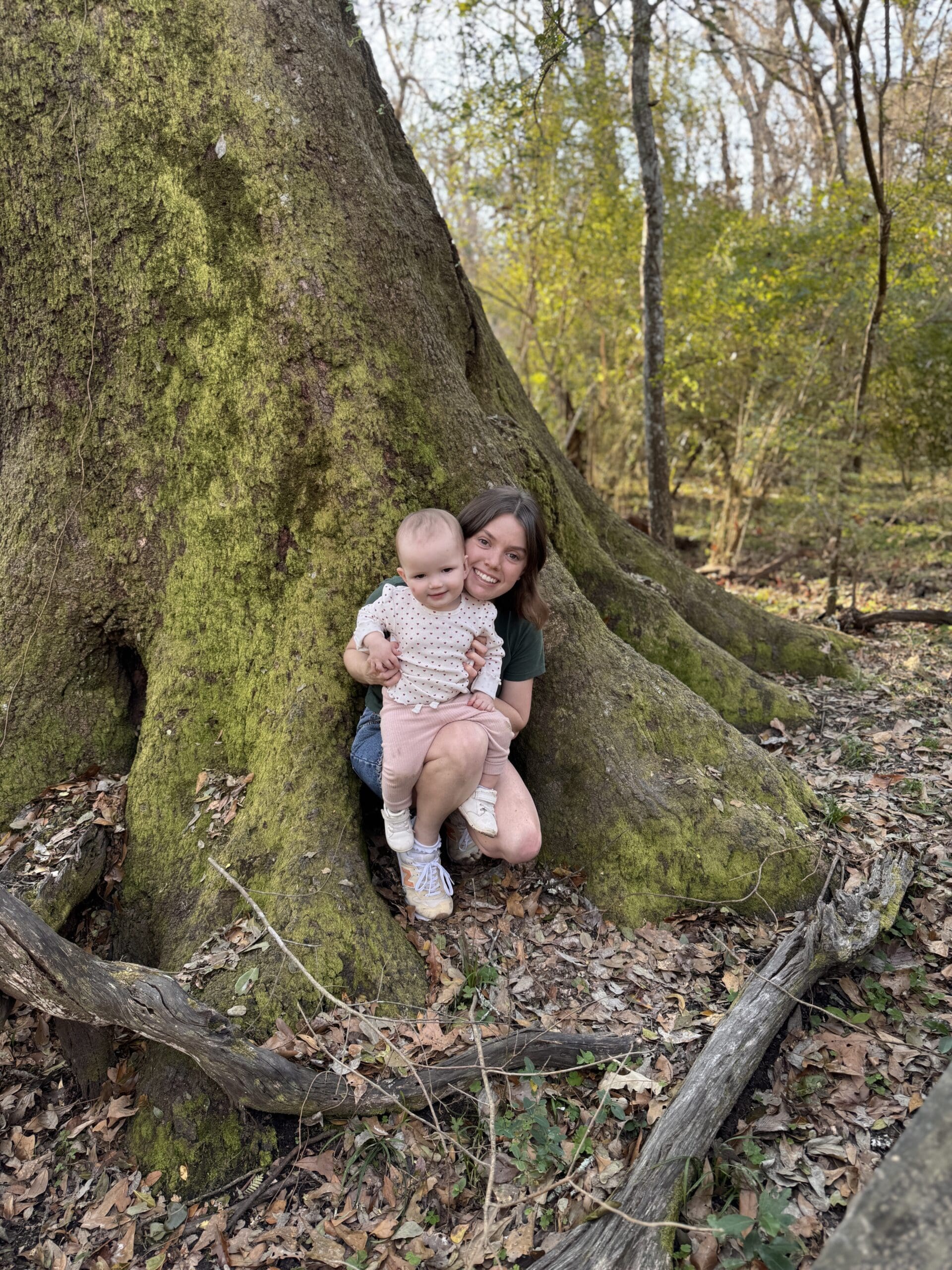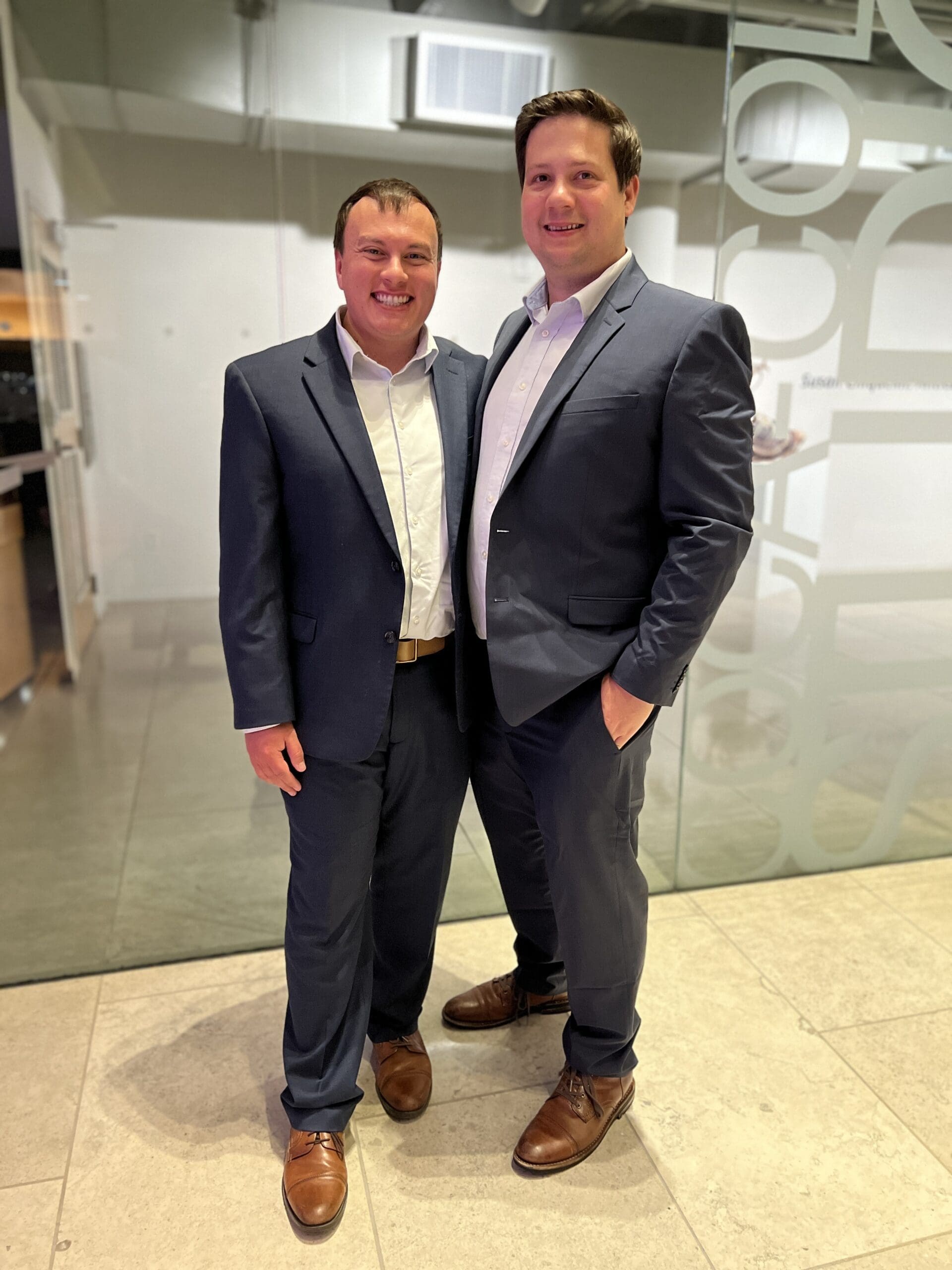Christy Marie Lush
Profession:
BFA, Visual Artist, PACE Teaching Artist
How long have you been a member of AcA?
I recently joined as a member as a birthday present to myself.
In addition to being a member, you’re also a Teaching Artist with AcA. Can you share a little about what that means to you?
I’ve been working with the AcA for 8 years in various teaching artist programs. This work has opened my eyes to the benefits of sharing art experiences with children and how much these experiences can reshape their understanding of themselves. As a child, I was referred to as “an artist in the making” by a teaching artist. I didn’t understand what she meant but it gave me hope. During a time of my life that could have broken me, this statement gave me curiosity about my potential as an artist. This teacher gave me a gift that still resonates with me today. She saved my life with those words and teaching with PACE is my way to give back.
What mediums or art forms are you most passionate about?
I fell in love with clay 20 years ago. I was an animation student with aspirations to be a movie animator but computers and I do not work well together. My very first time clay experience, I helped to build a clay and straw (adobe) sculpture, I was hooked. Clay is both fragile and resilient. A ceramic piece can exist for thousands of years and inspire countless generations of artists in the future. Look at how much ancient Greek pottery we can see today. One of the most fascinating things to me about ceramic pottery is that the forms we make are not new forms. They’ve all been made before by countless artists before us but the way we individually decorate the surface of our pottery is unique to each artist. In a short amount of time, we are doing what the earth can do in millions of years, but in a less random way. Molten clay and metal forming crystals under heat, pressure and the pull of gravity. The act of creating ceramic work is to harness the elements.
What inspires your current work?
Most of my current work is all about creating lush gardens. I borrow heavily from the natural world while elevating my pieces to a place where they sit between function and form. Simply put, I see my pottery work as more sculptural than functional. A water pitcher with 6 handles, a teapot layered with cumbersome undulating adornments, coffee mugs with deeply textured handles created from discarded scraps.
This fascination with scraps is my way of resisting our human tendency to be wasteful. A happy accident or discarded trimming from the wheel is a jewel. Every potter makes the same mistakes, no matter the experience level. We produce recognizable scraps that resemble mushrooms or coral. I teach wheel throwing to students with all skill levels and every time someone “messes up” or trims off excess clay, I see the potential in what’s discarded. My pieces are covered in other peoples mistakes.
I see my work as a challenge to change what we see as useless into something useful. I also love assemblage like Louise Nevelson. Clay structures acting as a support for found objects is part of my artistic practice as a way to continue the conversation about wastefulness.
Is there a project, exhibition, or performance that you’re especially proud of?
My exhibition record is very short. I am as skittish as a jack rabbit when it comes to presenting my work to the public. I appreciate this opportunity to begin the process of breaking out of my shell and presenting my work to the world. My work is meant to invite you into an intimate space.
My work for the Cur Non exhibit, Stargazer, delivered exactly what I wanted to convey. A quiet connection with a little sculpture of a rabbit. She was intended to be viewed from above as if looking down at a child. She was meant to convey a kind of timid bravery. She is my spirit animal and I hope to be as courageous as she appeared to be.
What artistic goals or dreams are you working toward right now?
I need to strengthen my business practice to be successful. I want to create beautiful gardens because my dream is to create both ceramic and living sculpture to share in both public and private spaces. These lush gardens are all about creating spaces to serve as both sculpture gardens and as a backdrop for cultural gatherings. To make this dream a reality, I have to make a name for myself in the landscaping world. I have a lot of ideas that I need to take out of my head and put them in the real world.
What do you love most about working with students through AcA’s Arts in Education program?
Creating art fundamentally changes who you are by providing an outlet for intense experiences. Some of these kids are surviving experiences that would otherwise destroy them if they didn’t have the tools to channel that energy through art in the future. I believe I was saved by the kindness and recognition of that teaching artist in Baton Rouge in the 80’s. I was a child with a mind full to the brim with questions and horrific experiences. I needed a way to answer difficult questions. I look back at that one moment of hope and I see that it set me on a much healthier path. I still struggle with confidence but I am striving to be the best version of myself because a teaching artist recognized my struggle and saw it as fuel for greatness. I bring that to every classroom I enter.
Is there a teaching moment that stands out to you—something that has stuck with you?
Oh, there are so many! It’s actually the parents of kids that I teach at my own studio. They have thanked me over and over because their kid is performing better in all aspects of their life after a few sessions with me. One piece of advice to a young person exploring art, would be to get curious about your ability. Ask yourself, can I draw that? Can I match that color with paint? Can I create my own animations? Can I develop my own characters? Can I design my own video game content? Yes, yes, the answer is yes! Get started, don’t wait! Art homework is the best kind of homework!
What inspired you to join AcA as a member? Do you remember your first experience with us?
At some point in the 90’s, during Festival International, the Acadiana Arts Council set up a large series of panels for the public to paint a collaborative mural and I spent hours painting an enormous tear drop. I remember the feeling of standing on my tippy toes to make the tear drop as big as I could. I wanted to see it as something big enough to climb into. I can’t say that I am a successful artist yet, but I decided that a membership with the AcA was worth every penny because I feel lucky to have it as part of our community. I wish I could donate more and attend more performances.
What’s been your favorite AcA event or performance to attend as a member?
I got to meet Ani DeFranco after she performed many years ago. I wasn’t a member then, but that was the moment I realized what a treasure the AcA is.
How does being part of the AcA community support or inspire you as an artist?
I work with amazing people as a teaching artist. The love and support has been a constant source of affirmation that I am living my best case scenario.
Do you have a favorite local spot downtown—maybe for coffee, food, or inspiration?
The Dafford murals, chai latte at Reve (soooo spicy!), gelato at Carpe Diem, pizza slices at Central with a roccete man salad, and those stuffed dates at Pamplona! YUM! My family and I spend a lot of time downtown.
What’s your favorite way to recharge outside of your art practice?
Gardening is a lifelong passion that you can see if you drive by my house. It’s kind of crazy how many flowers are in my yard.
Do you have a book, piece of music, or artist that’s inspiring you lately?
My son is reading 1984 by George Orwell for school right now and I am a huge fan of protest art like Banksy for all the reasons laid out in that story. I believe artists are warriors against fascism. I believe we have a responsibility to ask difficult questions and demand honest answers. I see art as freedom. I see our freedom as something precious and fragile. Like ceramics, democracy only endures if we protect it.
I am currently attending the AcA’s 4 part series about creating public art. I am inspired by artists like Joel Breaux and Ned Kahn that create public art installations that utilize the natural world. I am fascinated by the way humans move through spaces and communicate. I want to create immersive installations that interact harmoniously with the environment.
Is there something you wish more people understood about being an artist or teaching artist?
This year I turned 50 and I felt a wave of relief wash over me. I still feel this overwhelming sense that I made it. I survived! My journey to this point has taught me that every art form stems from the same experiential language. We can share our truth through art. For me, art is a universal language that can build bridges and challenge narrow mindedness. I see art as a way to build healthy relationships with our environment and people in our local communities. Teaching art to kids has made me appreciate that original ideas, generated through the art making process, can forge a stronger sense of self worth. My biggest challenge is the balance that has to be struck between being an artist and a business person. My advice to myself and other artists is to overcome fears of rejections and just go for it! Ask for help!
(:HELP!:)




